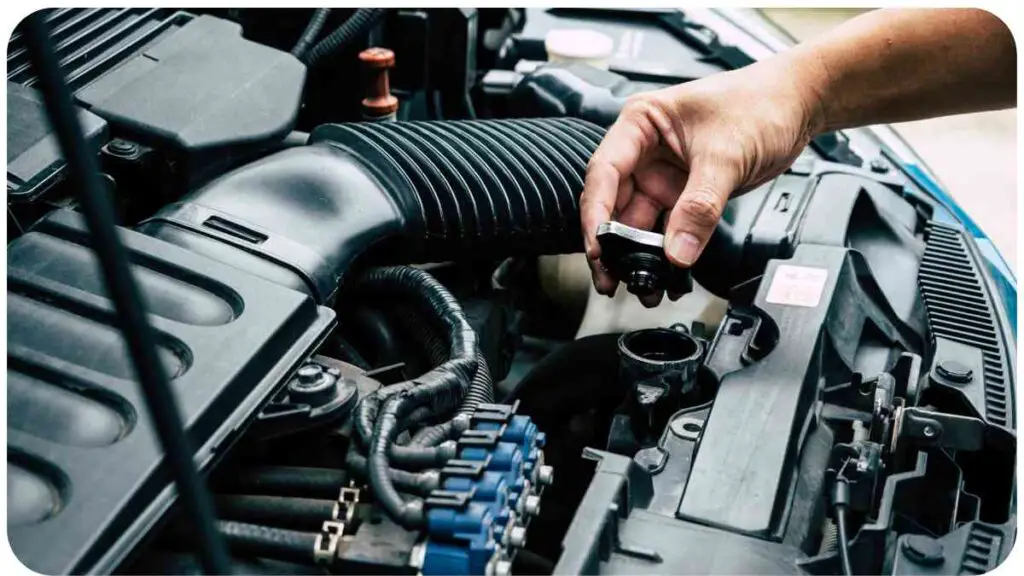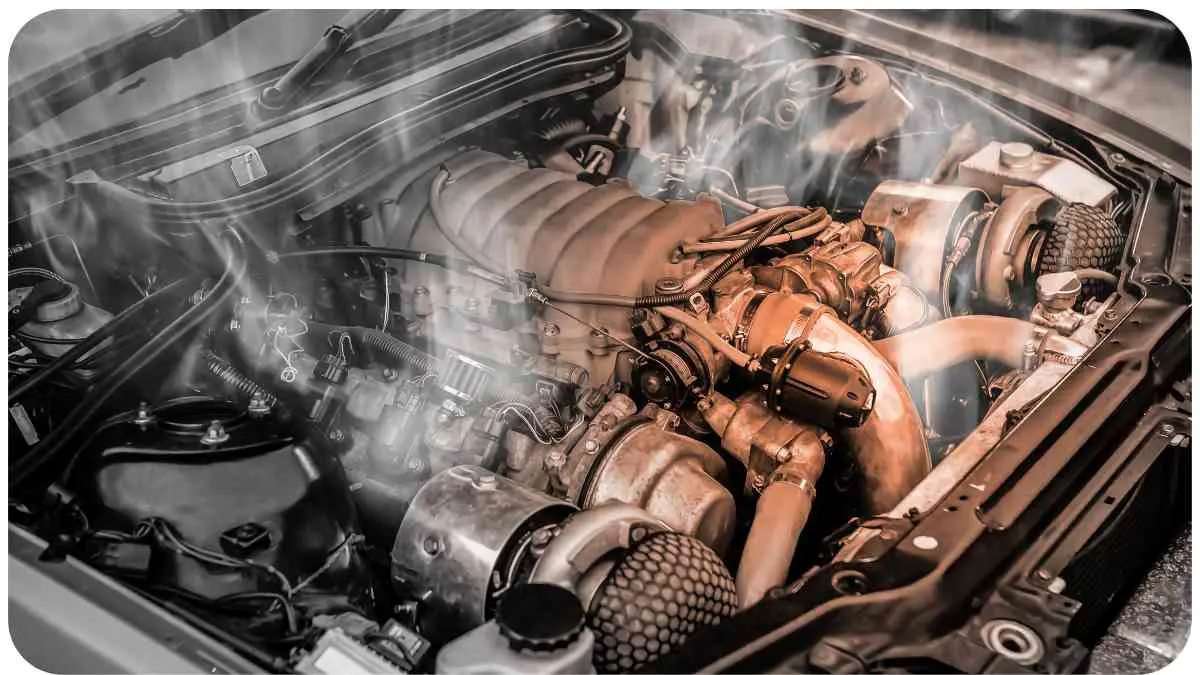When venturing off-road, there are numerous challenges to tackle, and one important aspect to consider is maintaining the optimal temperature of your vehicle’s engine. Understanding what qualifies as a normal engine temperature for off-roading is crucial to prevent overheating and potential engine damage.
In this article, we will delve into the factors influencing engine temperature, how to identify safe temperature ranges, signs of overheating, and tips to keep your engine running smoothly in demanding off-road conditions.
| Takeaways |
| 1. Monitoring engine temperature is crucial for off-roading to prevent overheating and engine damage. |
| 2. Factors such as ambient temperature, cooling system efficiency, and driving conditions influence engine temperature. |
| 3. The ideal operating temperature range for most engines is around 195°F to 220°F (90°C to 105°C). |
| 4. Overheating can cause serious consequences, including blown gaskets and engine failure. |
| 5. Signs of an overheated engine include high gauge readings, steam/smoke, coolant/burning rubber smells, engine misfires/stalls, and decreased performance. |
| 6. Regular maintenance, adequate cooling system, and driving techniques help maintain safe engine temperatures. |
| 7. Common cooling system problems to watch out for include radiator leaks, faulty thermostats, and water pump issues. |
| 8. Further reading and research is essential for gaining a deeper understanding of engine temperature and safe operating ranges. |
2. The Importance of Monitoring Engine Temperature
Monitoring engine temperature is a fundamental aspect of vehicle maintenance, especially for off-road enthusiasts. The ideal temperature range allows the engine components to operate optimally, ensuring efficiency and performance while minimizing the risk of engine damage.
Neglecting to monitor engine temperature can lead to overheating, which can cause severe engine problems, including blown gaskets, warped heads, and even complete engine failure. Therefore, understanding safe temperature ranges is paramount to protecting your vehicle and enjoying your off-road adventures without unexpected breakdowns or costly repairs.
Building a support system after experiencing grief and loss can be difficult, but finding strength in the community can make a big difference. Check out our guide on building a support system after a loss to learn more about the benefits of the community during times of grief.
3. Factors Affecting Engine Temperature

Several factors can influence the engine temperature, and being aware of these aspects can help you maintain safe operating conditions for your vehicle.
3.1 Ambient Temperature
The ambient temperature, or the temperature of the surrounding environment, plays a crucial role in determining engine temperature. Extreme heat or cold can impact the engine’s ability to dissipate heat effectively, affecting its overall performance and stability. It’s essential to consider the ambient temperature when assessing the engine operating conditions and adjusting your driving techniques accordingly.
Understanding the importance of insurance for off-road vehicles is crucial in protecting your investment. Explore our comprehensive guide on off-road vehicle insurance to ensure you have the coverage you need for your adventures.
3.2 Cooling System Efficiency
The efficiency of your vehicle’s cooling system is vital to maintain a normal engine temperature. The cooling system comprises several components, including the radiator, water pump, thermostat, and coolant, all of which work together to regulate the engine temperature. A malfunctioning cooling system can lead to overheating, so regular maintenance and periodic checks of these components are essential.
3.3 Driving Conditions

Off-roading often involves challenging driving conditions, such as steep inclines, uneven terrain, or extended periods of idling. These conditions can put additional stress on the engine, causing it to heat up faster than during regular driving. Understanding the impact of these factors on engine temperature will help you adjust your driving style accordingly and prevent overheating during your off-road trips.
Regular maintenance is key to keeping your off-road vehicle running smoothly and maintaining safe temperatures. Learn more about the importance of regular maintenance to ensure your engine stays cool during off-roading.
| Driving Condition | Impact on Engine Temperature |
| Uphill climbs | Increased heat production |
| Rough terrain | Reduced airflow |
| Extensive idling | Insufficient cooling |
| Heavy load | Added stress on the engine |
4. Understanding Safe Temperature Ranges
To ensure the longevity and performance of your off-road vehicle’s engine, it’s crucial to understand the safe temperature ranges it should operate within.
4.1 Ideal Operating Temperature
Most engines are designed to operate within a specific temperature range, usually around 195°F to 220°F (90°C to 105°C). This temperature range ensures efficient combustion, lubrication, and emission control. It is important to note that different vehicles may have slightly varying temperature ranges, so always refer to your vehicle’s owner’s manual for specific recommendations.
Navigating dangerous terrains during off-road driving requires careful planning and adherence to safety guidelines. Find expert tips and safety advice in our article on navigating dangerous terrains to ensure a safe and exciting off-road experience.
4.2 Overheating and its Consequences
Operating the engine at temperatures above the recommended range can lead to overheating, which is a serious concern. When the engine overheats, the increased temperature puts excessive stress on various components, potentially causing damage. Overheating can result in:
- Warped cylinder heads
- Blown head gaskets
- Cracked engine blocks
- Damaged pistons and rings
- Bent connecting rods
Preventing overheating should be a top priority to avoid costly repairs and the inconvenience of being stranded in remote off-road locations.
5. Signs of an Overheated Engine
To catch overheating issues early and take appropriate action, it’s important to be aware of the warning signs. Here are some common signs of an overheated engine:
- High engine temperature gauge reading
- Steam or smoke coming from the engine compartment
- Strong smell of coolant or burning rubber
- Engine misfires or stalls
- Noticeable decrease in engine performance or power
If you experience any of these signs, it’s crucial to address the issue promptly. Ignoring an overheating engine can lead to severe damage.
Protecting your off-road investment goes beyond insurance. Discover valuable insights on protecting your off-road investment with proper maintenance and care, to enjoy long-lasting adventures with your vehicle.
6. Tips for Maintaining Safe Engine Temperatures
Now that we understand the importance of maintaining safe engine temperatures, let’s explore some actionable tips to help you keep your off-road vehicle running smoothly:
6.1 Regular Maintenance Checks
Regular maintenance checks are essential for keeping your vehicle’s cooling system in optimal condition. Some key maintenance tasks include:
- Inspecting and cleaning the radiator and condenser
- Flushing and replacing coolant at recommended intervals
- Verifying the functionality of the water pump
- Checking for any leaks or cracks in the cooling system
- Ensuring adequate airflow to the radiator by clearing debris or obstructions
By diligently performing these maintenance tasks, you can minimize the risk of overheating and maximize your engine’s performance and lifespan.
6.2 Adequate Cooling System
Having an efficient cooling system is crucial for maintaining safe engine temperatures during off-roading. Here are some steps you can take to ensure an effective cooling system:
- Upgrading to a high-performance radiator
- Using a high-quality coolant compatible with your vehicle’s specifications
- Installing a supplementary transmission or engine oil cooler, if necessary
- Upgrading the electric fan or adding an auxiliary fan for improved airflow
Enhancing the cooling system can provide better heat dissipation and help your engine withstand the demanding conditions of off-roading.
6.3 Driving Techniques
Adopting appropriate driving techniques can significantly contribute to managing engine temperatures. Here are some tips:
- Avoid excessive idling, especially during challenging off-road situations.
- Maintain a steady and consistent speed to minimize engine strain.
- Shift to a lower gear when climbing uphill to reduce engine load.
- Give your engine breaks by stopping and turning it off during longer periods of idling.
By following these driving techniques, you can prevent excessive heat buildup and maintain safe engine temperatures during your off-road adventures.
7. Common Cooling System Problems
Even with regular maintenance and precautions, cooling system issues can still occur. Being aware of common cooling system problems will help you identify and address them promptly, preventing potential overheating. Here are three common cooling system problems to watch out for:
7.1 Radiator Leaks
A leak in the radiator can cause a significant decrease in coolant levels, leading to inadequate cooling. Inspect your radiator regularly for any signs of leaks, such as visible coolant stains or puddles beneath your vehicle. If you notice a leak, have it repaired or replace the radiator as needed to prevent overheating.
7.2 Faulty Thermostat
The thermostat plays a crucial role in regulating the flow of coolant through the engine. A faulty thermostat can cause the coolant to either flow too slowly or not at all, leading to improper cooling. Warning signs of a faulty thermostat include erratic temperature gauge readings or inconsistent engine performance. Replace a malfunctioning thermostat to ensure proper cooling system function.
7.3 Water Pump Issues
The water pump is responsible for circulating coolant throughout the engine and radiator. If the water pump fails or becomes inefficient, coolant circulation may be compromised, resulting in inadequate cooling. Common signs of water pump issues include coolant leaks around the pump, unusual noises, or overheating. It’s essential to inspect the water pump periodically and replace it if necessary to maintain an efficient cooling system.
By addressing cooling system problems promptly, you can prevent overheating and ensure that your off-road adventures go smoothly.
8. Conclusion
Understanding safe engine temperatures for off-roading is crucial for maintaining your vehicle’s performance and longevity. By monitoring ambient temperature, maintaining a well-functioning cooling system, and adopting appropriate driving techniques, you can prevent overheating and enjoy your off-road experiences without unforeseen engine issues.
Remember to conduct regular maintenance checks, address cooling system problems promptly, and be aware of the signs of an overheated engine. Taking these precautions will help you protect your investment, avoid costly repairs, and ensure many memorable off-road adventures.
Stay informed, be proactive, and prioritize the well-being of your engine to make the most of your off-roading experiences while keeping your vehicle running smoothly.
Further Reading
Here are some additional resources for further reading on the topic of engine temperature and safe operating ranges:
- What is the Normal Operating Temperature for a Car Engine (Not Turbocharged)?
This Quora thread discusses the normal operating temperature for a car engine that is not turbocharged. It provides insights from various car enthusiasts and owners, sharing their experiences and knowledge. - Какая рабочая температура двигателя и почему она поднимается?
This article on Avtotachki.com (in Russian) explores the working temperature of the engine and why it increases. It delves into the factors affecting engine temperature and provides valuable information for understanding engine behavior. - Diesel Engine Operating Temperature
The Camping Advisor offers an insightful article focused on diesel engine operating temperature. It covers the safe temperature ranges for diesel engines, as well as tips and recommendations for maintaining optimal temperatures during off-roading or camping adventures.
FAQs
Here are some frequently asked questions about engine temperature and their answers:
How do I know if my engine is overheating?
Signs of an overheated engine include a high engine temperature gauge reading, steam or smoke coming from the engine compartment, a strong smell of coolant or burning rubber, engine misfires or stalls, and a noticeable decrease in engine performance or power.
What should I do if my engine starts to overheat?
If you notice signs of an overheated engine, it is important to take immediate action. Safely pull over to the side of the road or off the trail and turn off the engine. Allow it to cool down before attempting any troubleshooting or repairs. Check the coolant level, radiator, and cooling system for any leaks or issues.
Can driving at high altitudes affect engine temperature?
Driving at higher altitudes can have an impact on engine temperature. As the air becomes thinner at higher elevations, the cooling efficiency of the radiator can decrease. It is important to consider the ambient temperature at higher altitudes and adjust your driving techniques accordingly to prevent overheating.
Is it normal for engine temperature to fluctuate?
Engine temperature can fluctuate slightly, especially during different driving conditions or when the cooling system cycles on and off. However, significant and consistent temperature fluctuations may indicate a problem with the cooling system or thermostat and should be addressed to prevent potential overheating issues.
Should I use water or coolant in my radiator?
To maintain optimal engine temperature and prevent corrosion, it is recommended to use a mixture of coolant and water in your radiator. Coolant provides antifreeze properties, prevents freezing in cold temperatures, and offers better heat transfer properties than pure water. Check your vehicle’s owner manual for the recommended coolant-to-water ratio for your specific vehicle.

Hi there! I’m Hellen James, and I’m the author of Unified Off-roads. I’ve been driving off-road for more than ten years, and I’ve had a lot of fun in that time—and a few not-so-great experiences too. But I’ve always wanted to help other people get started off-roading, so I decided to start this blog to share my knowledge with others.


